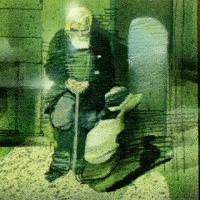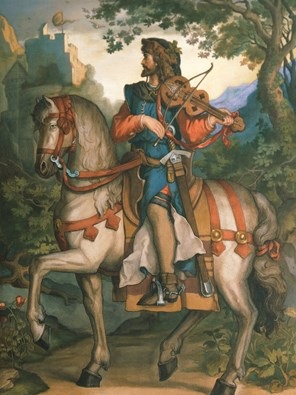
The menacing figure of Chernomor provides distant echoes of The Gnome, Mussorgsky's first "picture" in the suite, which was based on a design for a toy nutcracker. Hartmann's original design has long since vanished.

Trilby was first performed at the Bolshoi in 1871, with choreography by Marius Petipa and music by Julius Gerber, both celebrities in their day. The plot was loosely based on a short story by the French author Charles Nodier titled "Trilby, or the Elf of the Argyle", published in 1822 (there is no relation to DuMaurier's ballet Trilby, which appeared in 1895). Petipa moved the setting from Scotland to Switzerland, and made other substantive changes as well. The title was changed to "Trilby, the Demon of the Hearth". The ballet featured children from the Russian Imperial Ballet School dressed variously as birds, butterflies and, as in this sketch, chicks still in their eggs.








.jpg)
